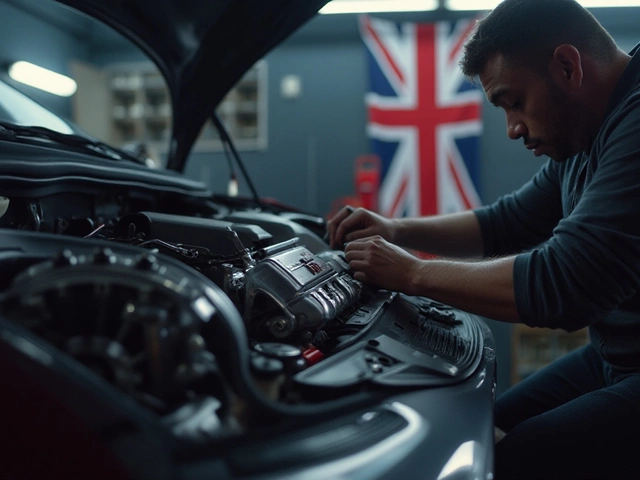Signs of Bad Spark Plugs You Shouldn't Ignore
If your car is acting up, the spark plugs could be the culprits. These tiny parts fire the fuel‑air mix, so when they go bad, the engine feels it. Below are the most common clues that tell you it’s time to check the plugs.
Common Symptoms of Failing Spark Plugs
Rough idle. When you’re stopped at a light and the engine shakes or stalls, a misfiring plug is often to blame. The engine can’t keep a steady rhythm without a good spark.
Hard start. If you hear multiple cranks before the engine turns over, the plugs aren’t delivering enough spark to kick things off.
Loss of power and sluggish acceleration. You’ll notice a dip in performance when you step on the gas. The car feels flat, especially at higher RPMs.
Poor fuel economy. Bad plugs cause incomplete combustion, so the engine burns more fuel to get the same mileage.
Engine hesitation or stumbling. A momentary stumble after you press the accelerator is a classic sign of a plug that’s not firing when it should.
Check Engine Light. Modern cars log misfire codes (P0300‑P0304). A flashing or steady light often points straight to the ignition system.
When and How to Replace Spark Plugs
Most manufacturers recommend swapping plugs every 30,000‑60,000 miles, but you’ll know they need changing sooner if any of the symptoms above appear. Here’s a quick DIY rundown:
1. Gather tools. You’ll need a spark plug socket, ratchet, extension bar, and a torque wrench if you want to hit the exact spec.
2. Let the engine cool. Hot plugs can crack when you remove them.
3. Remove the old plug. Disconnect the ignition coil or spark plug wire, then turn the socket counter‑clockwise. If it’s stuck, gently tap the handle with a rubber mallet.
4. Check the gap. New plugs often come pre‑gapped, but double‑check the spec in your owner’s manual.
5. Install the new plug. Hand‑tighten first, then snug it with the torque wrench (usually around 13‑20 ft‑lb).
6. Reconnect the coil or wire. Make sure it clicks into place.
If you’re not comfortable pulling plugs yourself, a quick visit to a local garage (like Northwich Tyres Centre) will get it done in under an hour. They’ll also scan for any hidden codes and inspect the ignition coils.
Remember, ignoring bad spark plugs can lead to more expensive damage—like burned valves or a cracked piston. Spotting the signs early saves you time, money, and a lot of road‑side frustration.
Next time your car shakes, stalls, or sips fuel like a thirsty camel, check the spark plugs first. A simple swap could bring your ride back to life and keep the engine humming smoothly.
 24 June 2025
24 June 2025
How Often Should You Change Spark Plugs: Guide for Car Maintenance
Not sure when to swap out your car’s spark plugs? This article unpacks how often you should change spark plugs, why it matters, and what happens if you delay. Find out the real impact on engine performance, fuel economy, and repairs. Learn the warning signs and get hands-on tips for making spark plug maintenance easier and cheaper.
Latest Posts
-

How to Tell If Your Car Needs a New Battery: Signs, Tests, and Costs
-

How Long Does It Take to Replace a Clutch Kit? Real-World Timelines & Tips
-

Understanding the Benefits of a Stage 2 Clutch Kit
-

Can a Fuel Pump Be Bad and Still Work? Signs You're Driving on a Dying Pump
-

What's in a Suspension? Understanding the Essential Parts

0